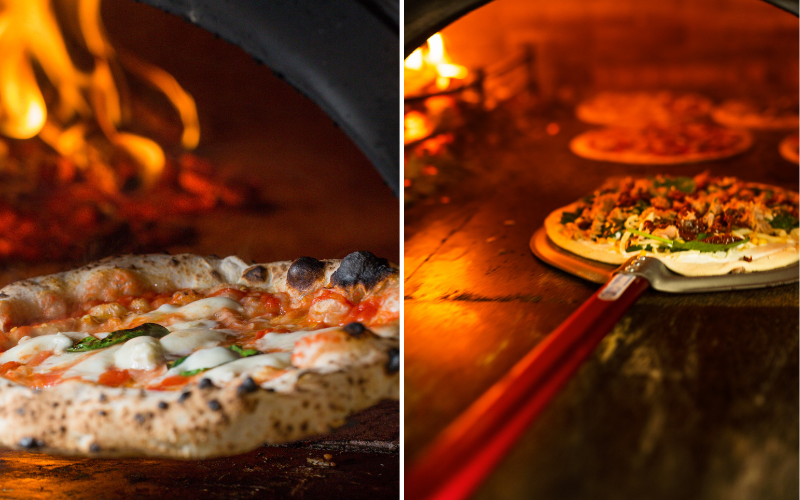When considering the diverse culinary landscape, few experiences can rival the pleasure of crafting a perfect pizza in the confines of one's backyard. The rising popularity of outdoor pizza ovens has brought along a surge of queries from enthusiasts, particularly about fuel. One common question? "Can you use regular firewood in a pizza oven?" Here, we aim to illuminate this subject, ensuring that your pizzas are not only delicious but also safe.

The Basics of Wood-Fired Ovens
Before diving into the specifics of firewood, it's crucial to understand the fundamental principles behind wood-fired outdoor pizza ovens.
These ovens operate by drawing fresh air into the fire, heating up the dome, and then expelling the hot air out through a chimney. The objective? Achieving and maintaining high temperatures, essential for that iconic crispy crust and well-cooked toppings.
What Constitutes "Regular Firewood"?
"Regular firewood" typically refers to common types of wood available for general burning, like heating homes. This can include hardwoods like oak, ash, and beech, or softwoods like pine, spruce, or fir.
Using Regular Firewood in Pizza Ovens: The Good and The Not-So-Good
Pros:
- Availability: Regular firewood is readily available in many regions, making it a convenient option.
- Cost-Effective: Often, it's more affordable than specialized cooking woods.
- Versatility: Different woods can lend unique flavor profiles to your pizzas.
Cons:
- Resinous Woods: Some softwoods like pine or spruce can be resinous, leading to excessive soot or even a tarry substance called creosote. This not only affects oven performance but can impart unwanted flavors.
- Moisture Content: Firewood for heating homes doesn't always have the low moisture content desired for cooking. Wet or "green" wood produces more smoke, struggles to reach high temperatures, and can result in a smoky-tasting pizza.
- Inconsistent Sizes: Regular firewood might not always come in the optimal sizes for pizza ovens, necessitating additional chopping or splitting.
Best Practices: Using Regular Firewood in Your Oven
If you decide to use regular firewood in your outdoor pizza oven, following some best practices can optimize your experience.
- Opt for Hardwoods: Whenever possible, choose hardwoods like oak, ash, or beech. They burn hotter and cleaner than most softwoods.
- Ensure Dryness: Look for wood with a moisture content of less than 20%. This ensures a cleaner burn and helps achieve the high temperatures essential for pizza.
- Prevent Resin Buildup: If using softwoods, ensure they are well-seasoned to minimize resin output.
- Chop to Size: Ensure your firewood pieces are of a consistent size, ideally between 9-12 inches long and split adequately.
Expert Insights
Chef Giulia Rossi, renowned for her wood-fired pizza creations, shares, "While I prefer specialized cooking woods, I've used regular firewood on many occasions. The key is understanding the wood's properties and adjusting your approach accordingly."
Samuel Foster, an outdoor pizza oven manufacturer, says, "It's all about the moisture content. Wet wood is the most common issue, leading to excessive smoke and flavor issues."
Conclusion
The romance of wood-fired pizzas is undeniable. And while specialized cooking woods can streamline the process, using regular firewood is undoubtedly feasible, provided you're aware of its quirks.
With knowledge, care, and a touch of experimentation, you can turn regular firewood into the perfect fuel for your outdoor pizza adventures, crafting pies that are not only delectable but also carry the satisfaction of a job well done.
You Might Also Like...











